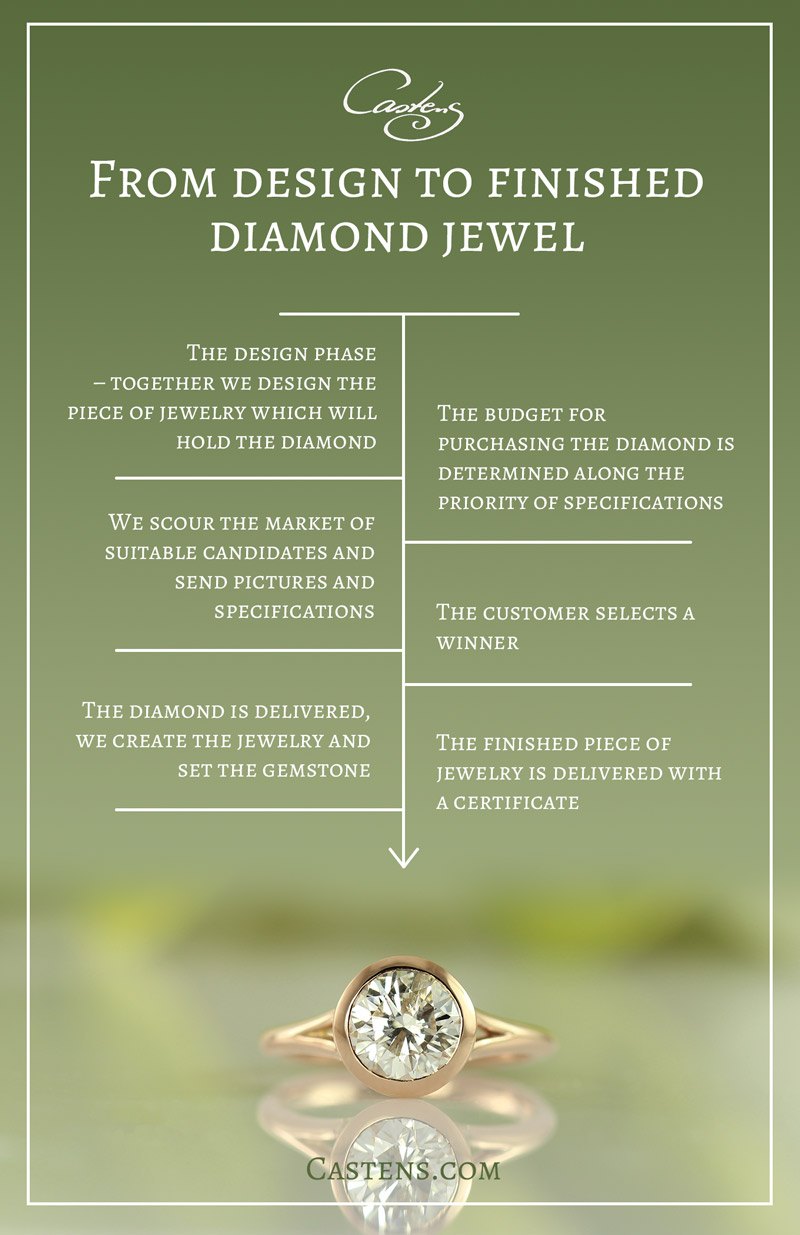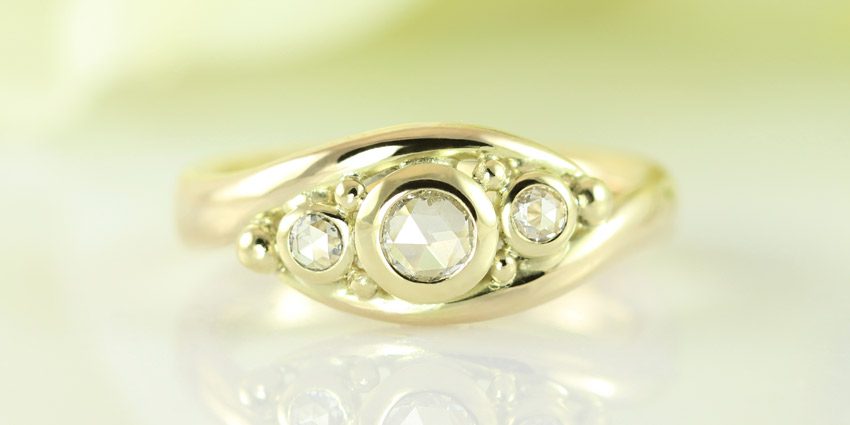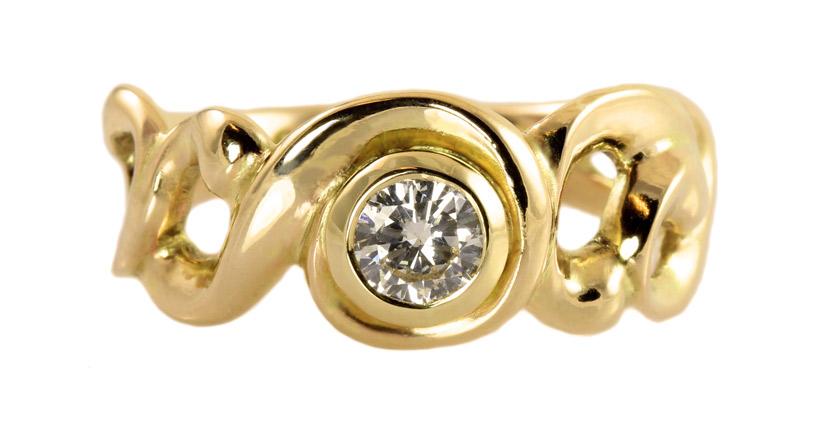How to choose the right diamond
It is thought provoking to consider, that a diamond is created for eternity due to its durability: Long after we are gone, it will still exist, which is why we don’t actually own a diamond – we just look after it for the next generation. If you are considering purchasing such a diamond, you need to look into the 4 C's, which describe its quality. This way of grading the gems makes it much easier to choose the right diamond according to your wishes
Carat
How big is it? This is question important in many areas, and also when it comes to diamonds. Many tiny diamonds are found and therefore obtaining those is within reach of most people. Large diamonds - from one carat and above in a jewellery grade quality are much more rare. And really large diamonds are extremely rare – which is why it always arouses great attention when new discoveries of giant diamonds are made, such as the Lesedi La Rona diamond at 1,109 carats, which has recently been found in Botswana.
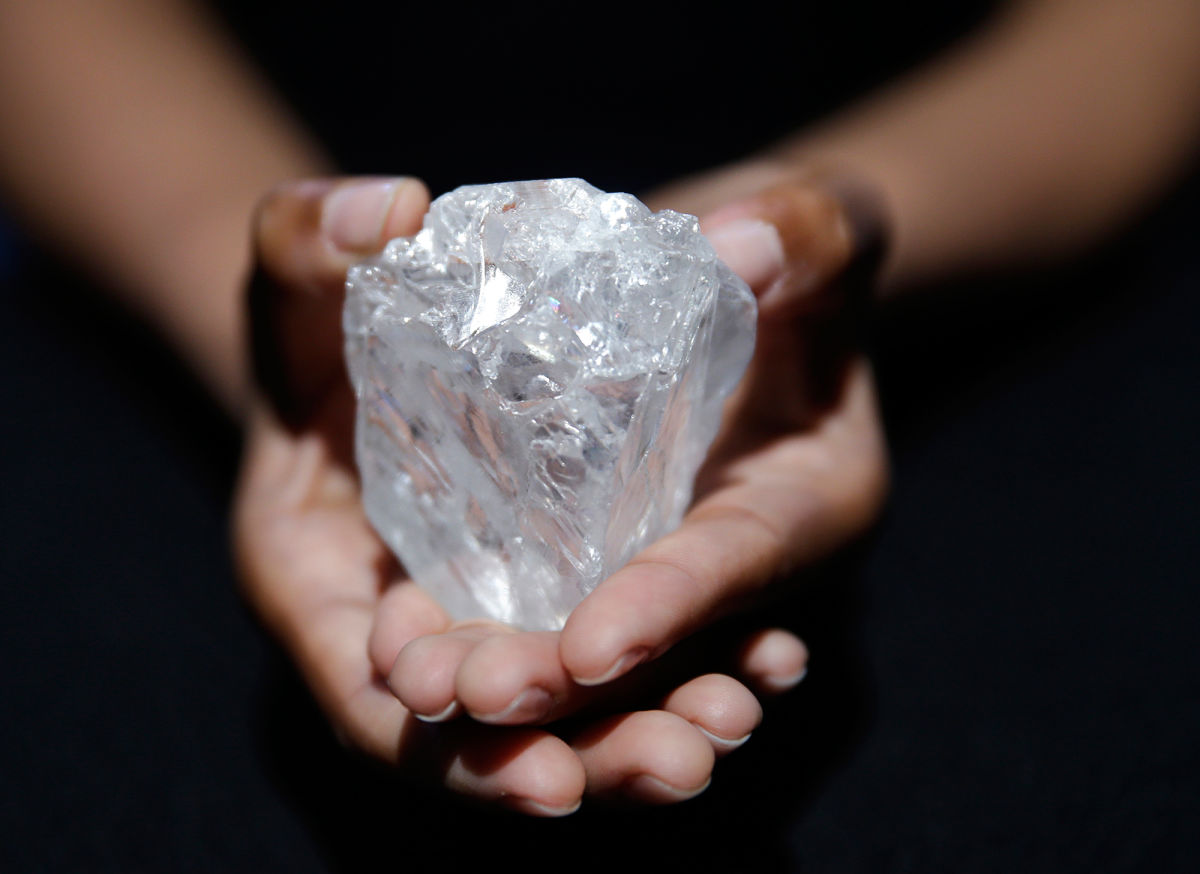
Carat is actually not a size measure, but a weight indication, which can be somewhat confusing. One carat weighs 0,2 g. Diamonds and other gems are measured in "carat" with C, whereas the alloy of gold is measured by "karat" with K. Just to confuse a little further, many diamond dealers of the industry are talking about “points” – 0,01 carat is a "one pointer". A diamond of 0.23 carats is 23 points.
This chart estimates the sizes (in mm) of the various carats:
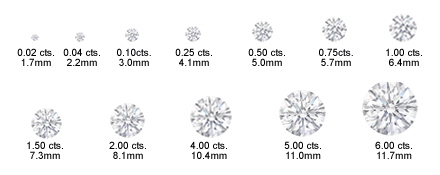
Clarity
How clear is the diamond? When we talk about "diamonds of a jewellery quality" we mean clear diamonds – a see-through gem. Most gems have natural impurities (inclusions) in them, and therefore diamonds which have absolutely no inclusions at all are quite rare, and not so surprising - expensive. However, this is a graduation issue. We differentiate from I - Included (or in Denmark P for piqué), which sport visible and large inclusions - a bit like the delicate flakes of amber - to "Flawless" which is just that: Even if you use a magnifying glass (or a microscope) you cannot find any flaws.
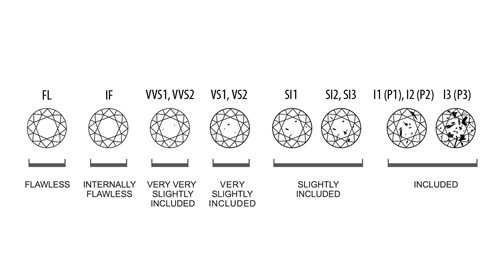
This means that an SI (Slightly included) diamond still requires a loupe or at least a very good eye and light in order to spot impurities. It goes without saying that to the naked eye, especially if the gem is very small, these diamonds will appear clear and are therefore considered to be of a decent jewellery quality. In the shop we as a general rule work with the SI (slightly included) diamonds when setting silver jewellery, and with VS or VVS when creating gold jewellery, unless our customers ask for something else.
In the later years a trend using opaque diamonds - diamonds which are so massively included that they are not clear anymore and therefore previously were considered not to be of gem quality. These diamonds often feature lovely, muted earthen colours and still provide an unrivalled reflection on their surface - they ARE after all still diamonds! What distinguishes these diamonds from their clear sisters is the fact that they are 100% individual: no two are the same. Just like the humans wearing them.
Colour
When we talk about diamonds, we generally think of "white diamonds". This is of course nonsense, because they are not white, but colourless. Therefore, what we really are talking about is HOW colourless they are. Many diamonds of jewellery quality do have a more or less yellowish tint, and this is what is referred to in the colour scheme. In Denmark we are uncharacteristically old fashioned, because we still call white diamonds something with "Wesselton" - abbreviated W. Most of the world uses the alphabetical classification below.
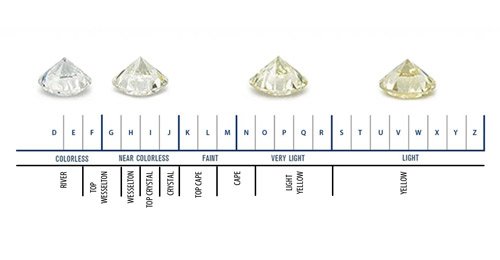
Many diamonds come in hues from champagne to brown and these colours can be extremely charming while also being a tad gentler on the budget. When I order champagne coloured diamonds, I usually order "C3" and would call the C5 "cognac".
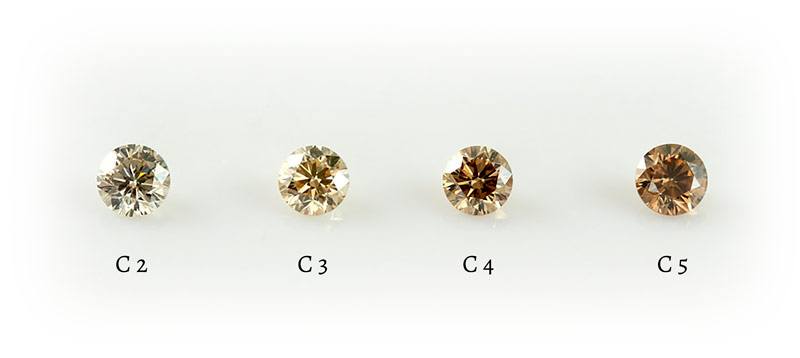
Diamonds come in all the hues of the rainbow. More about that further below.
Cut
How is the diamond cut? The most common cut is called "brilliant" or "diamond" cut – the classic, round faceted shape we normally associate with diamonds. This is the modern cut with a total of 57 facets (yes, also the tiny 0.005 ct diamonds, measuring only 1 mm have 57 facets).
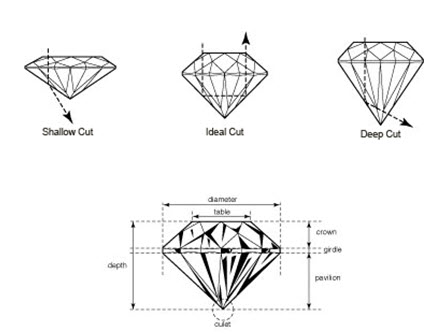
The cut is the only human factor of the 4 C's, and especially the Belgian diamond cutters are considered to be very good at obtaining the perfect cut: If the diamond is proportioned correctly and facets positioned correctly relative to each other, the gem will reflect nearly all light back from inside. In other words: it’s the cut which reveals the famous "fire" of the diamond.
If a cut is absolutely perfect, the loose diamond will show the hearts & arrows pattern when seen in a special tube-like loupe. We have such a loupe in the shop and you are welcome to bring in any loose diamonds to have tested, if it is, indeed, a "Hearts & Arrows".
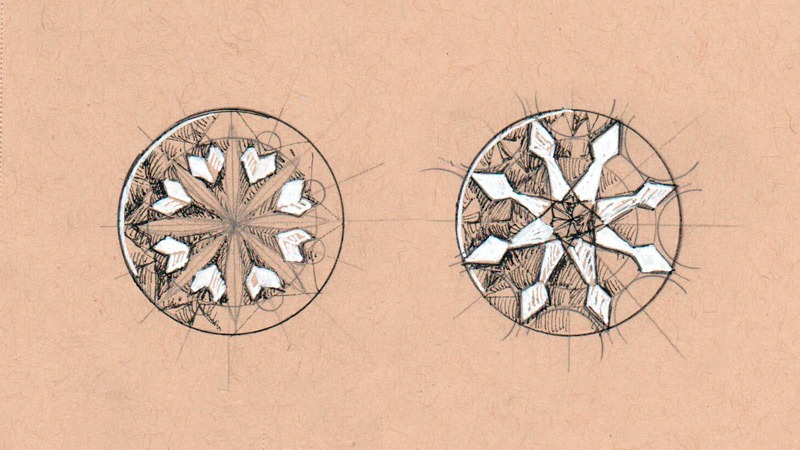
The cut is so vital to the appearance of the diamond, that a well-cut W/SI might outshine even an R/FL. In this case the average diamond will look absolutely stunning.
Our primary diamond dealer is Pure Diamonds, who have specialized in diamonds with a particularly high quality cut. This small company can provide even very small diamonds with excellent cut - even Hearts & Arrows, also called 'Ideal Cut' - for the discerning connoisseur!
PURE Diamonds is the only Danish company which has obtained the privilege of becoming a member of the lodge-like association Antwerp Diamond Bourse. Beurs Voor Diamanthandel is one of the world's oldest and most prestigious diamond exchanges, guaranteeing professionalism, in-depth industry knowledge and adherence to the highest ethical standard.
Apart from the round shape, diamonds available also in a variety of shapes and cuts for instance the very charming and old fashioned rose cut.
Would you like to know more about diamonds and for instance see some good examples of how the different cuts will appear, go to the page of GIA (Gemmological Institute of America)
What is the price of a diamond?
This is a difficult question - it obviously depends on the size, but as described above, a lot of other factors are to be considered. You can have a tiny diamond of 0,01 ct (apr. 1,5 mm large) set in your jewellery for less than 500 DKK - including the labour cost of having it set.
But the price curve is steep!
For instance: A 0,1 carat diamond of 3 mm is a fine gem for an engagement ring. It is large enough to stand on its own (provided the ring itself is delicate enough) and still affordable. If you choose a lower quality of W/SI it will be app. 2.522 DKK. If you want the best quality of TW/VVS, you pay app. 3.342 DKK. In comparison, a beautiful champagne coloured diamond will cost app. 1.000 DKK.
Another example of a larger diamond:
A 0,34 carat diamond of app. 4,5 mm of a W/SI qality will have a price tag of appr. 15.800 DKK. The best TW/VVS quality version would be app. 22.700 DKK. In comparison, the champagne version would be app. 4.800 DKK.
How about the larger diamonds? One carat and above?
Top quality (TW/VVS) would be around 135.000 DKK.
A colourless diamond (W/SI2 – meaning with some minor imperfections, which can be detected with the bare eye) is just below 80.000 DKK.
A 1 carat champagne diamond can be acquired for approximately 24.000 DKK.
While a black diamond for the dramatic ones is priced below 10.000 DKK.
When we write ”Top quality” we mean the best quality in a standard jewellery shop. However, as you have read above, this is of cause not the absolute TOP quality, because you CAN acquire even better diamonds with the (non) colour “River” and which are “Flawless” – also under a loupe. These gems are quite rare and hence the price depends entirely on how many of these diamonds can be found on the market at a given time.
Coloured diamonds
Want a coloured diamond? Diamonds are found spanning the entire rainbow spectrum, but finding a coloured diamond which is of a clear quality is extremely rare and therefore they are quite expensive. Only one out of 100.000 carat diamonds found in nature are coloured. Blue diamonds are the most rare ones and therefore the price is substantial.
The famous pink Argyle diamonds unearthed in the Argyle mine in Australia, are found in a range of beautiful pink and purple hues.
A 0,1 carat natural pink Argyle diamond will start around 29.000 DKK. The price will double or even triple if the colour is vibrant. Therefore the price curve of the pink Argyle diamonds is steeper than of the white ones.
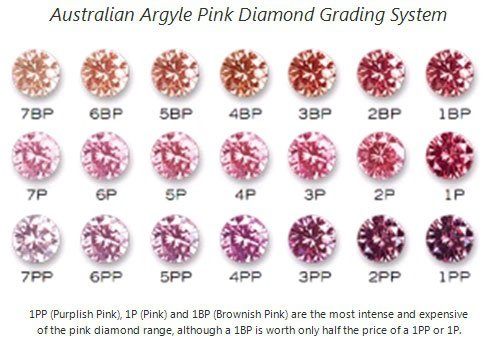
Diamonds also come in a whole range of amazing colours, which are obtained by artificial means, copying the process of colouring them which takes place in nature. This usually involves radiation, pressure or heat. These real diamonds with an artificially acquired colour are pricewise far more accessible. BUT if you hand in a ring with a coloured diamond for repair, it is important that you inform the jeweller, because the gem can change or lose the colour when subjected to the heat of soldering the piece of jewellery it is set in. We can counteract this in different ways, but it is your responsibility to bring the attention of the jeweller to the character of the gem.
A price example of such a coloured gem: An olive 0,1 carat diamond would be app. 1.730 DKK, while a pink version still is more expensive. That one would be app. 4.430 DKK. Black diamonds however are rather cheap in comparison at only 590 DKK.
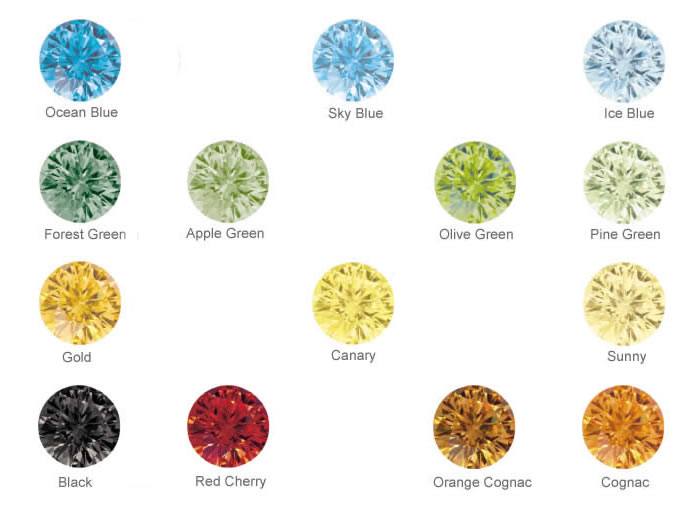
Consider a budget
Diamonds come in all price ranges and therefore, when we design and plan a piece of custom made jewellery, it is a great idea to work based on a budget. After sketching we will provide a price offer of the piece of jewellery itself - materials and labour hours included - and then we consider which gem to set within the rest of the budget. We can always adjust sizes and quality, enabling us to create the piece of jewellery of your dreams.
If you want a bit special diamond with a certain shape, colour or size, we will search for it amongst our providers before letting you choose the one which fits your wishes and budget the best.
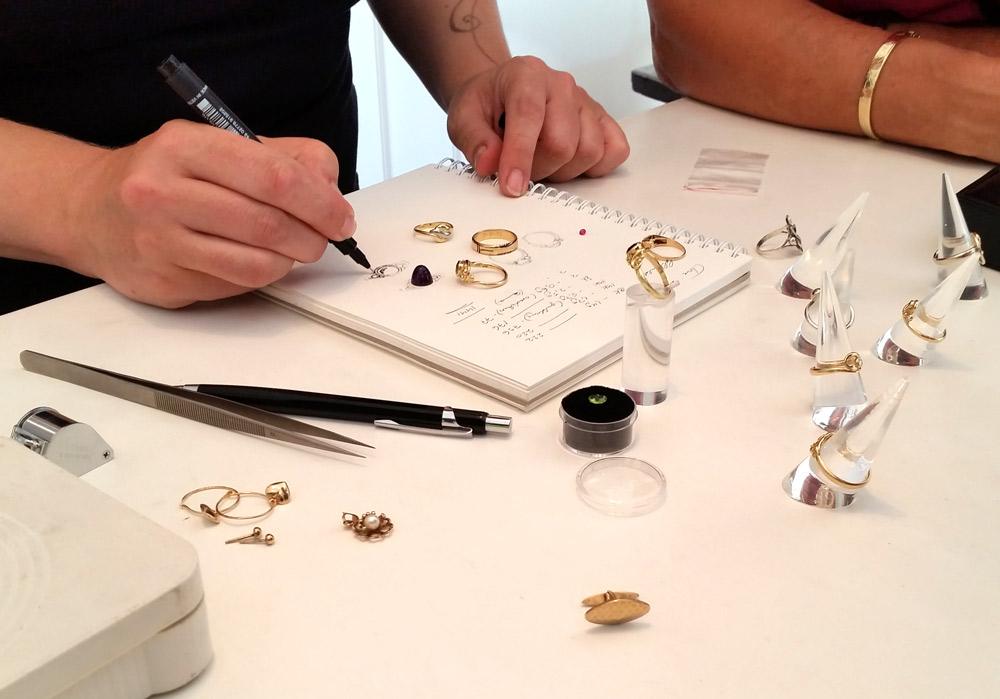
NB! The above mentioned prices are a guideline - prices will fluctuate.
If you would like a price list of standard sizes and colours of diamonds, please contact us at design@castens.com
